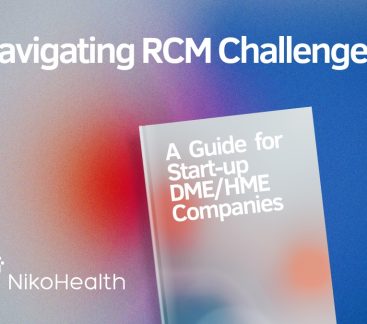As we step further into 2022 after a dramatic 2020 and 2021, we see priorities for many HME providers are shifting. We discovered some interesting DME industry trends and want to share them with you.
1) E-commerce
The healthcare sector is digitizing at an amazing pace. According to Adroit Market Research, global medical healthcare e-commerce is anticipated to be over $435 billion by 2025. Initial digital transformation drivers were the aging population and the willingness of consumers to do their own online research. However, the COVID-19 pandemic has proven the value of medical device e-commerce, as medical suppliers must increasingly rely on digital channels to service customers and grow their business. Maintaining compliance with complex and myriad regulations is a major challenge and has kept some players out. But for those who navigate the landmines of HIPPA, compliance, and other regulatory issues, the medical equipment e-commerce niche is a highly lucrative and growing market.
2) Workflow Process Automation
On a daily basis, HME providers deal with manual, paper-based tasks, from billing and claims management to patient onboarding, documentation, and order fulfillment. While these tasks are tedious and time-consuming, they’re critical. However, as the demand for products and services grows, these manual tasks take longer to complete and become prone to error, putting the HME provider and patient at risk. Considering that 1 in 6 people will be over 65 by 2050, the capacity for HME providers to handle increased demand will strain business resources.
Managing the order lifecycle involves multiple tasks such as data input, processing, insurance eligibility, order fulfillment, and billing. The process can be manual, time-consuming, and prone to error. In addition, order fulfillment times can lag, impacting how quickly patients receive the medical equipment and supplies they need. On the revenue cycle front, inefficient processes can cause accounts receivable to age, decreasing collections and impacting cash flow.
Automation can streamline the processes from intake through collection. Workflow automation can accelerate manual processes while leveraging the right technology solution – Home Medical Equipment Software – and lead to more efficient operations.
3) Going Paperless
Forty-three percent of businesses say that they plan to reduce their workforce due to technology adoption. Conversely, 34% plan to expand their workforce due to expansion when the right workflow tools are incorporated. Over 80% of business leaders report speeding up work process automation and expanding their use of remote work. Additionally, 50% of business leaders say that they’re planning to accelerate the automation of repetitive tasks within their organization, and 51% of automation initiatives aim to boost efficiency. Business leaders agree that workflow automation speeds up the completion of repetitive tasks. Organizations who adopt the right workflow process automation through technology recognize the benefit through a reduction in human error, improved order capacity, and overall happier experiences for patients.
4) Adaptation to Staff Shortages
It is no secret that recruiting the right team has been a challenge in recent years. With businesses of all types competing for labor, retaining employees has never been more important. Home medical equipment providers are no strangers to these staffing challenges, and mitigating turnover has been a top priority. The complexity of the HME business has always made staffing a challenge, and the pandemic has exacerbated this further. Many HMEs simply can’t get the staff they need to get all the work done. These challenging events have actually proved as accelerators for new technology and adapting to change. Realizing that the old ways don’t work, and recognizing that something different is needed, HME providers are turning to the right technology tools to eliminate repetitive tasks and leverage minimal staffing to get the job done.
Using the proper technology solution is crucial for an HME or DME business. NikoHealth allows market players to streamline their operations, effectively integrate with other software, get rid of paperwork, save time and increase earnings. We are always up-to-date on the latest DME industry trends so that we can continue to improve our software and help your business grow.








Comments
Actually, automation and staff shortages can be united into one section. But still, it’s interesting. Sometimes we need many specialists in certain fields, but a good DME software solution could resolve this issue.